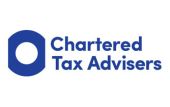
HMRC’s wrong determination against entrepreneur’s relief in the Chris Thomson case
Key points
- Chris Thomson progressively sold his 99.9% share in an accountancy business to two partners.
- The assets of the practice comprised premises, goodwill and work in progress with debtors.
- ER was claimed on the sale of the business property to Chris’ pension fund.
- HMRC incorrectly refused the claim to ER claiming that it was not a qualifying associated disposal, despite Chris Thomson’s explanations.
- HMRC’s decision was upheld, for different – incorrect – reasons, at statutory review.
- The FTT’s decision was that the disposal was part and parcel of a wider disposal and ER was available.
Every now and then a tax case decision comes along which looks fairly innocuous until you start looking into it in more detail. Such a case is that of Christopher Thomson (TC8337). I should note a prior interest in this case, which started when I responded to a Readers’ Forum question, number 19520 in Taxation, 19 March 2020, page 25 (tinyurl.com/timelydisposals).
Subsequently, the taxpayer concerned, Chris Thomson, contacted me and I was pleased to be able to give him some assistance in preparing his case for the First-tier Tribunal hearing.
Facts
Chris was a partner in Voisey & Co in Warrington. He had a 99.9% share with 0.1% owned by Philip Urmston. Chris wanted to retire while also securing the continuity of the business, so he agreed with Philip and another accountant in the practice, Lee Warburton, to sell them the practice over a number of years, starting in 1996. The way that this was effected was commercial but slightly unusual, as follows:
Lee and Philip would each pay Chris £20,000 a year for roughly 20 years, a figure that was based on the work in progress at the time of the agreement.
Chris would transfer clients to Lee and Philip over a period of time. The effect of this would be that their share of the partnership income and profits would increase and Chris’s would reduce.
Chris would gradually reduce his hours to match the transfer of work.
Overall, this made for a non-linear transfer of profit entitlement. Chris’s entitlement was 99.9% in 1996, 20% at the beginning of 2017-18 and there was an 8% reduction during that year. It was also noted that he had by that stage disposed of 99% of the goodwill and all of the old work in progress, although he had retained his 99% interest in the business premises that were also owned by the partnership.
Lee and Philip did not want to take on the business property, so, during 2017-18, it was sold separately to Chris’s pension fund. Entrepreneurs’ relief (ER) was claimed on the basis that this was part of Chris’s disposal of the business.
Associated disposal correspondence
HMRC refused the claim to ER, although the reasons for the refusal changed throughout the correspondence and it is a matter of some concern to me that the officer at HMRC simply jumped to a conclusion, rather than sitting back and considering all the relevant facts and information. In response to the initial letter from HMRC, Chris clearly stated that the disposal of the property was in the course of his retirement from practice. HMRC wrote back saying that, since he retained a partnership interest in Voisey & Co, ‘the sale of the property was disposal of an asset and not disposing of all or part of your business’.
However, ER can apply to the sale of the whole or part of a business, as stated in TCGA 1992, s 169I(2)(a), and the sale of a partner’s interest in the assets of a partnership is to be treated as a disposal of the whole or part of a business (by TCGA 1992, s 169I(8)(b)). So it seems unreasonable that the officer simply withdrew the claim to relief, without considering the facts given or asking for further information.
Chris’s response was to highlight the fact that he had been selling the business over a number of years, giving up practice work and profit share, along with a number of other factors. He noted that this would not have been clear from the tax return, as the only chargeable assets were the property and goodwill and, having ascribed only a nominal value to the goodwill, he had not received any consideration for the goodwill element. He also explicitly stated in the letter that ‘this was not an associated disposal of an asset used in the partnership’.
HMRC’s response was to pick up on this last point in completely the wrong way, by stating that he did not meet the qualifying conditions for the disposal to be an associated disposal under TCGA 1992, s 169K. While this was not the claim being made, the correspondence throws up a couple of interesting points.
The two main conditions that were discussed with respect to s 169K were condition A1, that Chris must have disposed of at least a 5% interest in the partnership assets, and condition B, which requires the associated disposal to the part of Chris’s withdrawal from the business. On the first of these points, HMRC compares the notional figure of £1,000 ascribed to the goodwill and compares it to the gross partnership assets of something over £643,000 and suggests that means Chris had only disposed of 0.16% of his interest in the partnership. Given that he had reduced his profit share substantially over the period since 1996, the implication is that HMRC was only looking at the reduction in partnership interest in the year in which the associated disposal took place. But the legislation does not specify that the 5% reduction of a partnership interest has to take place in the same tax year as the associated disposal. Indeed, in many cases, the associated disposal of an asset used in a partnership may happen some time after the individual concerned has given up their partnership share.
The officer also said that ‘condition B is not satisfied by reducing the amount of work you do in the partnership’. Since condition B, as noted above, requires Chris’s withdrawal from participation in the business, it is hard to see how that can be evidenced other than by reducing the amount of working he was doing in the partnership.
That is the basis on which the officer issued the final closure notice in September 2019. So, for several rounds of correspondence, the officer of HMRC was refusing ER on the basis that it was not a qualifying associated disposal, despite having been told by Chris, at least twice, that that was not what he was claiming. In my view, this shows a lack of professionalism or proper oversight at HMRC. The officer either did not read Chris’s correspondence thoroughly or he ignored what Chris was saying.
Statutory review
Chris requested a statutory review under TMA 1970, s 49A. In her review of the facts, the review officer noted that the claim had been disallowed on the incorrect assumption that the qualifying conditions for an associated disposal were not satisfied. However, she then confirmed the decision on a completely different basis.
This feels wrong, to me. Surely, if HMRC’s arguments have been based on the wrong piece of legislation, the case should have been remitted to the original officer to consider the arguments in the context of the correct reason for the claim to ER.
Be that as it may, the review officer rehearsed the facts and correspondence and then upheld the original decision, albeit, as noted, on different grounds. Specifically, the decision was that:
‘In order to claim ER you cannot dispose of a business in stages. The disposal of a substantial asset by itself will not prove that part of a business has been disposed of. Nor is a simple scaling down of activity enough to show that the property disposal constitutes a disposal of part of your partnership. Relief is not due where an individual partnership sells one or more of its business assets whilst continuing with its business as before.
‘To be able to claim ER you must have disposed a part of the business at the same time that you disposed of your interest in the partnership. The disposal of the property was the disposal of an interest in one of the partnership assets which does not qualify for ER under section 169I(8) TCGA 1992.’
This series of statements by the review officer is quite disturbing. Let’s start with the first point, that ER is not available when someone disposes of a business in stages. I have read the relevant legislation many times and I would suggest that it clearly says that a person can dispose of the business in stages. Otherwise, why would TCGA 1992, s 169(2)(a) refer to ‘a disposal of the whole or part of a business’? Surely this must mean that a person could claim relief for the disposal of part of a business, followed by the disposal of the rest of the business at some later time?
While I accept that the disposal of a business asset or the scaling down of partnership activities do not individually show either of the disposal of part of a business or the disposal of a partnership share, taken in combination, together with all the other facts that had been rehearsed in that letter, it was blindingly obvious that Chris had disposed of almost the whole of the business over the 22-year period between 1996 and 2018
Finally, to say that it is necessary to dispose of part of the business at the same time as the disposal of the partnership interest is an absurd statement, considering that s 169I(8) clearly says that ‘the disposal by an individual of the whole or part of the individual’s interest in the assets of a partnership is to be treated as a disposal by the individual of the whole or part of the business carried on by the partnership’ and that, for these purposes, ‘the business is to be treated is owned by each individual who is at the time a member of the partnership’.
The tribunal
It was around this time that Chris wrote his Readers’ Forum question to Taxation and, following my response to that question, he approached me for some assistance with his response to HMRC’s statement of case. HMRC’s case was not very long and most of it rehearsed the background facts, the administrative validity of the enquiry and the closure notice and a review of the relevant legislation. The crux of HMRC’s technical position was in paragraphs 31 to 33, which read as follows:
‘31. Section 169I TCGA 1992 provides that where an individual disposes of either the whole or a part of his or her interest in the partnership this is treated as a disposal by that individual of the whole or part of the business carried on by the partnership.
32. An interest in a partnership is a single holding. But a disposal (or part-disposal) of the individual’s interest in one or more particular assets of the partnership, rather than of his or her entire interest in all the partnership assets, does not meet this condition for relief.
33. The appellant’s argument is that, over the years, he has disposed of the majority of his interest in the partnership, and the disposal of the property was part of this. The respondents say that you need to look at the disposal which gave rise to an ER claim – which is a disposal of the property alone. This disposal was not a disposal of an interest in the assets of the partnership as a whole, but rather a disposal of an interest in one of the partnerships assets, which does not qualify for ER under s 169I(8).’
This is clearly incorrect. First, HMRC misrepresented the legislation: its paragraph 31 refers to the disposal by an individual of ‘the whole or part of his or her interest in the partnership’. HMRC’s position here is reflected in CG64040, which also refers to disposals of the whole or part of an individual’s interest in a partnership. However, TCGA 1992, s 169I(8)(b) actually says ‘the disposal by an individual of the whole or part of the individual’s interest in the assets of a partnership is to be treated as a disposal by the individual of the whole or part of the business carried on by the partnership’. Therefore, Chris’s argument was that his disposal of 99% of the property, which was an asset of the partnership, was clearly a disposal of the whole of his interest in that asset of the partnership and must therefore be treated as a disposal by Chris of part of the partnership business.
HMRC’s paragraph 32 states that: ‘an interest in partnership is a single holding’. This statement is incorrect, as a matter of general law, as the Partnership Act 1890 (PA 1890) tells us that a partnership cannot own assets. For example, PA 1890, s 20 and s 21 talk about property being held ‘on account of the firm’. In any case, this seems to be in direct contravention of TCGA 1992, s 169I(8)(b) which refers to a disposal of partners interest in the assets of a partnership. Once HMRC had agreed that the property was an asset of the partnership, Chris’s disposal of his interest in that asset clearly satisfied the terms of that provision, so ER should be available.
Finally, HMRC’s argument was that it is necessary to look at the disposal that gives rise to the claim, which was the disposal of the property alone. This is clearly contrary to the agreed facts. In 2017-18, alone, it is clear that Chris had disposed of an element of the goodwill of the partnership, as well as of other assets, such as rights to profits, work in progress, cash, etc. The fact that these are not chargeable assets appears to be implicitly part of HMRC’s argument. It seems to be saying that one can only look at the specific disposal of an asset on which ER can be claimed, which perforce must be a disposal of chargeable assets, and that that must be looked at in isolation.
Looking more widely, there was no dispute that, over the period of 22 years, Chris had disposed of the vast majority of his interest in the partnership and there is nothing in the legislation to say that an overall disposal of his partnership interest, or of his interest in the assets of the partnership, is to be restricted only to disposals of chargeable assets or only to disposals in the year in which ER was claimed in respect of the specific assets concerned. Chris’s point was that, as recorded in the judgment (at paragraph 33): ‘It was artificial to look at just the partnership assets treated as assets for capital gains tax purposes as that did not include the other assets transferred to the New Partners. Even in the tax year 2017-18 the appellant reduced his share of the partnership.’
Decision
In the end, the judgment was very short. The First-tier Tribunal said that TCGA 1992, s 169I ‘does not have any hard delineations limiting its application’ and its application ‘depends upon a realistic view of the facts and artificial limits should not be read into the legislation’ (paragraph 35). The tribunal said that the application of s 169I does not require one to look ‘solely at the capital gains assets being disposed’ and that the application of the legislation could apply to disposals in different tax years, although this must be determined on the facts (paragraph 36).
The FTT’s final judgment was that ‘the disposal by the appellant of the premises was part and parcel of a wider disposal of all of the appellant’s share in the assets of the partnership’ (paragraph 41), so that ER was available.
Discussion
I would argue that HMRC’s approach was wrongheaded from the very start, including a complete misconception as to why ER was being claimed. However, there are some elements that might explain HMRC’s concerns.
While it wasn’t mentioned as part of their arguments, it may be that their view was partly coloured by the fact that, while the partnership business was sold to the new partners, the property was sold to another person, ie Chris’s pension fund. The legislation does not require a disposal or part disposal to be to the same person for ER to be available, but I wonder whether HMRC would have taken the case if the property had been sold to the other partners as part of the succession.
Secondly, HMRC might have been concerned at the fact that the overall disposal of the partnership business took over 20 years to effect but that the disposal that gave rise to a material capital gain was a single disposal of the property in a single tax year. On this point, the FTT said that ‘we are aware that the period of time over which these events took place is extreme. We have decided this appeal on its own perhaps peculiar facts’ (paragraph 41). However, the FTT agreed that it was clear from the facts that the sale of the property in 2017-18 was part of the wider sale of the partnership business by Chris, regardless of the fact that this had taken over 20 years.
Because HMRC was concentrating on the disposal of a single chargeable asset, it may have felt that this could not qualify for ER unless the disposal of that asset constituted the sale of part of a business. It quoted the case of Dilip Amin (TC5265). In that case, Mr Amin sold a 50% interest in a property that he owned to his pension fund. Part of the property was occupied by his accountancy business, and he had sold part of the accountancy business to another individual. The decision of the tribunal in that case was that the sale of the premises and the sale of the goodwill were wholly unconnected transactions.
The distinction appears to have been that the property which was sold was only partly occupied by the business, because the tribunal suggested that if he had sold just the office space that was occupied by the business – which he no longer needed, having sold part of the business – that might have qualified. So, the implication, albeit only at First-tier Tribunal level, so that it does not set precedent, is that there has to be some nexus between the disposal of part of the business and the disposal of an asset used in the business. This case is also distinct from Chris’s case, as Mr Amin was a sole practitioner, so there was no question as to whether s 169I(8) applied to the disposal of the property as a partnership asset.
Conclusions
The first point is that, if you are convinced you are right, and your view has been affirmed by other experienced tax advisers, it is worth fighting the case, as the tribunal will always look at the legislation and the facts objectively. And this need not be particularly expensive; generally, if the taxpayer loses a case in front of the First-tier Tribunal, HMRC cannot claim costs unless the case is classified as complex. So, Chris, having chosen to run the case himself, and to represent himself at the hearing, was not potentially on the hook for HMRC’s costs, if it had won.
Secondly, it shows the rather unfortunate lack of professionalism by some of HMRC’s staff. I am particularly concerned at the fact that there was substantial correspondence based on an incorrect understanding of the nature of the claim being made by Chris, since he had told HMRC at least twice that he was not claiming relief for the disposal of the property as an associated disposal, he was claiming relief on the basis of having sold part of the business. Chris ran the correspondence himself, so his costs of the correspondence would have been minimal. If he had been paying professional fees to another adviser, I might have been tempted to suggest that he make a formal complaint and claim restitution. While HMRC is entitled to argue its case on a technical level, even if it turns out to be incorrect, it is not acceptable that the majority of the correspondence was based on a misconception that had been corrected more than once by the taxpayer.
Finally, this case demonstrates that HMRC’s view of the meaning of legislation is not always correct. Those of us who have made a career in giving tax advice will be aware of that, but many less experienced tax advisers will automatically assume that HMRC’s view of the legislation, as stated in its manuals or in correspondence, must be correct, and I wonder how many technical cases are conceded on that assumption, when the taxpayers might well have won, had they persevered.
Overall, this is a good result for Chris (and I am not aware that HMRC is intending to appeal), so justice has been done. I am concerned at the amount of time and money wasted in arguing the wrong technical point, as well as at the dogmatic approach taken by HMRC when the facts, in my view, at least, clearly pointed to the relief being due.








